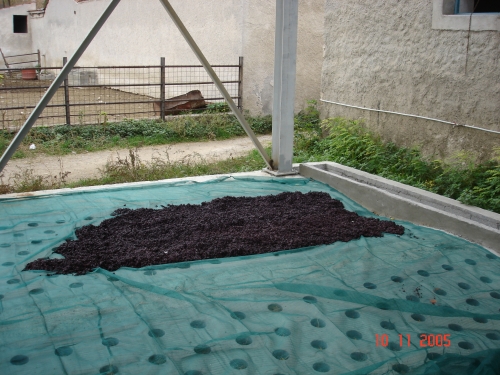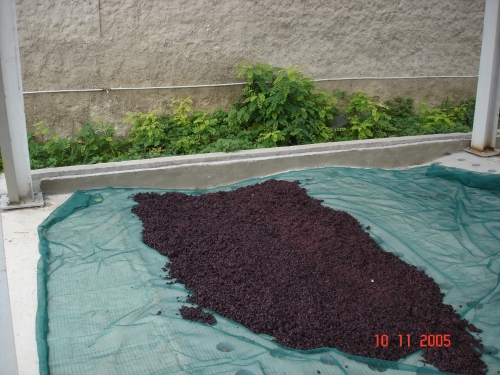Main action of this project was the development, optimization and demonstration of an economically viable process for the integrated management of wineries wastes in a pilot plant scale. The constant public demand for the production of high quality wines has substantially increased the corresponding amount of solid wastes (with high content in polyphenols, tannins and other organic compounds). Since most wineries are small enterprises that cannot afford the proper treatment of their wastes, usually they are placing them in open fields, where by aerobic degradation are being converted to fertilizer. During this biodegradation process, the solid wastes remain exposed in the environment, constituting a serious pollution factor. On the other hand, winemaking process consumes an enormously large amount of water (ca 2 lt for each lt of wine), affording to the environment a large volume of sludgy liquid waste.
 |
 |
This demonstration process developed within DIONYSOS Project refers to the extraction of solid wastes and subsequent elaboration of the extracts with specific adsorbance resin columns to isolate polyphenols, such as catechin, epicatechin, trans-resveratrol, gallic acid, quercetin and their corresponding glucosides. These compounds are of considerable commercial and economic value, since they possess valuable biological properties mainly as anti-oxidants. Research findings have indicated that they inhibit the oxidation of human low-density lipoproteins (LDL), resulting in the reduction of their blood levels and retarding atherogenesis. As a consequence, these high added value products are found extensive use as nutritional supplements or raw materials in food, cosmetic and pharmaceutical industries. This recovery procedure is friendly to the environment, since uses as solvents only water and alcohol, which is recycled and reused.
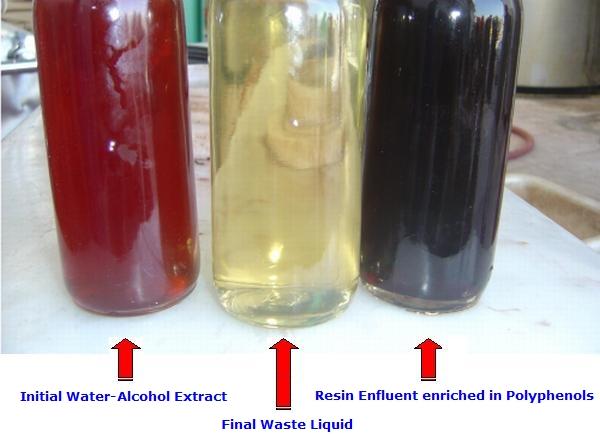
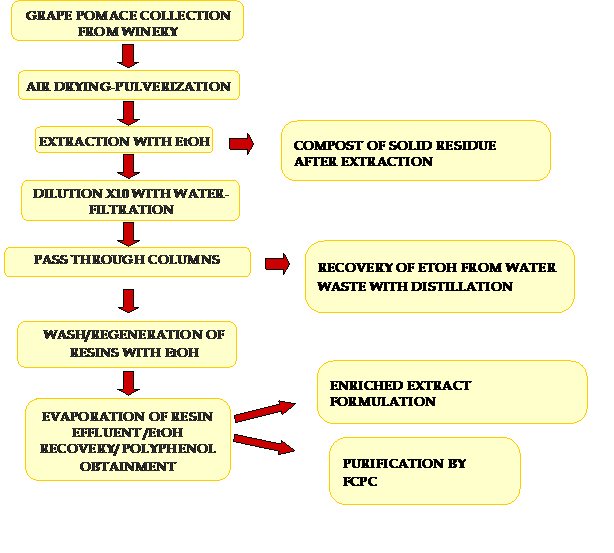
The first section of the treatment system includes the collection, air-drying, pulverization and extraction of grape pomace with EtOH with mechanical stirring for 12 h. Then the extract is separated from the powder and diluted with ten volumes of water and filtered.
The second section of the treatment procedure includes the pass of the filtered water-alcohol extract through a series of specialised adsorbent resins in order to achieve the decolourisation and the removal/ recovery of the polyphenols content.
The water-alcohol grape pomace waste after its pass from the previous stages is an odourless, light yellow coloured liquid, which does not contain any polyphenolic substances. All contained polyphenols have been successfully adsorbed.
The third section of the treatment procedure aims at the recovery of the organic solvents mixture, which has been used in section B of the system and the obtainment of the dry enriched polyphenolic extracts.
The fourth section aims at the purification of resveratrol and other polyphenols contained in the enriched extract coming from section C, using FCPC chromatograph
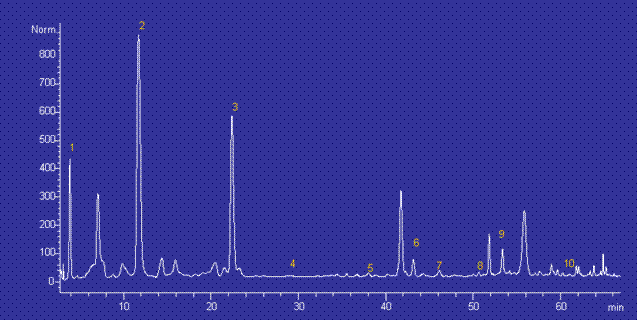
1 gallic acid, 2 catechin, 3 epicatechin, 4 p-coumaric acid, 5 ferulic acid6 rutin, 7 tryptophol, 8 myricetin, 9 trans-resveratrol, 10 quercetin
Structures of the main polyphenols and stilbenoids isolated from the enriched grape pomace extract
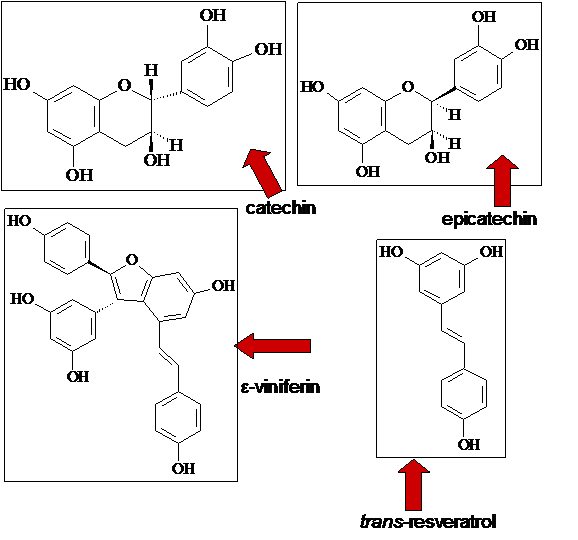
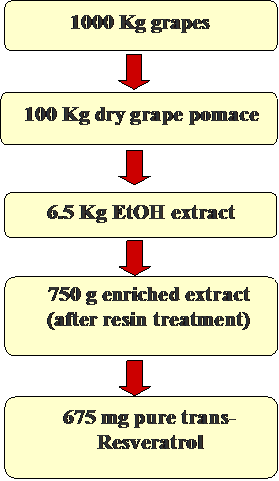
Enriched grape pomace extract formulation
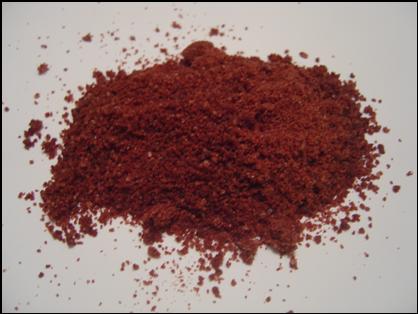
The obtained extract after the resin treatment is a semisolid product that cannot be easily handled. For this purpose the extract is mixed with maltodextrin (1:3 ratio) diluted in water and submitted to spray-drying. The final product is a red fine powder that can be easily consumed after dilution in a glass of water. Based on the quantity of the contained resveratrol in the extract and the corresponding grapes, consumption of approx. 600 mg of the extract is equivalent with the consumption of 1 Kg of grapes.
Ôhe extract in collaboration with the Department of Cardiology, University General Hospital, ATTIKON was administered to patients with coronary disease and found to improve the endothelial function
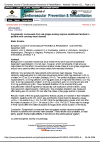
The slurry residue of the aforementioned procedure that also contains compounds of high nutritional value (such as amino acids, sugars etc) is used as animal food additive in sheep feeding programs.

A prototype composting unit has been installed in the Agricultural University of Athens. In this unit the remaining sludgy waste is converted to organic fertilizer through composting, under controlled conditions in a non-polluting manner.
